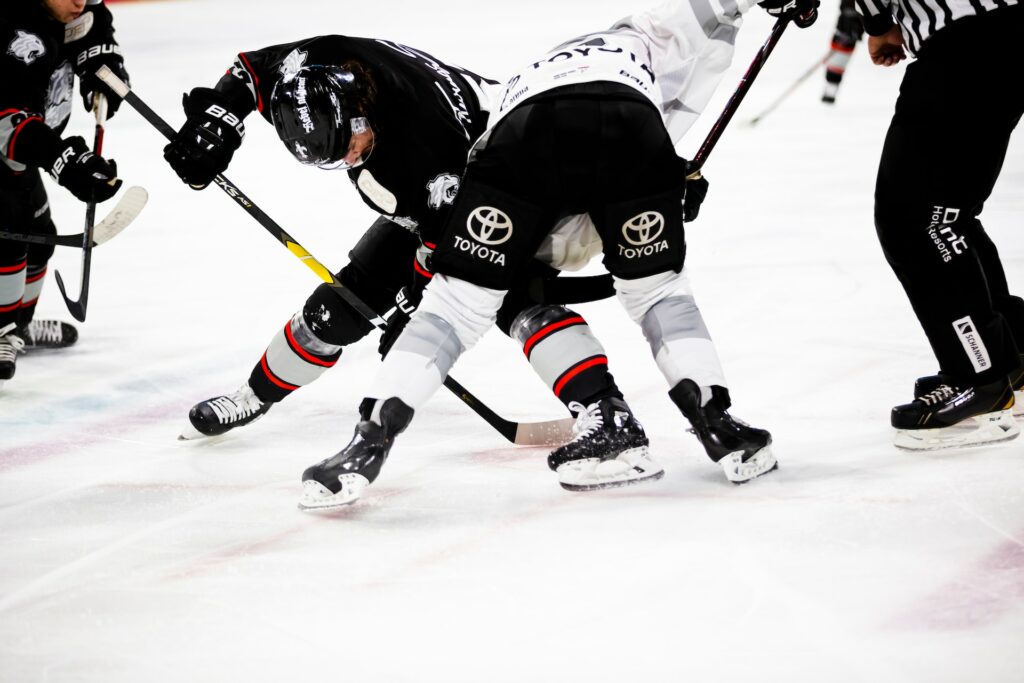When one tunes in to watch a hockey game, the scene is often set with shots of players arriving at the arena in finely tailored suits. The question arises: why do hockey players don these formal outfits, and what significance lies behind their choice of attire?
The Influence of Tradition and Collective Agreements
Hockey players don suits due to a combination of factors. The Collective Bargaining Agreement between the NHL and the NHL Players’ Association mandates this dress code. As outlined in Exhibit 14: Form of Standard Club Rules, point 5, players are required to wear jackets, dress pants, and ties for all team games and while traveling, unless exceptions are granted by the Coach or General Manager.
A Sport Steeped in Tradition
The significance of wearing suits in hockey transcends the contractual obligation. Tradition is a cornerstone of the sport, with hockey being renowned for preserving its historical roots. Dating back to the 1920s, players arriving at games dressed in suits and ties is a practice that has endured unaltered over the decades.
This adherence to tradition begins early, even for peewee players (ages 11-12) on A and AAA teams, who are already required to don suits for their games, a custom they carry throughout their playing careers. The memories of young players donning their first clip-on ties remain vivid, highlighting the transition from childhood to a professional outlook.
The Underlying Philosophy and Changing Perspectives
Beyond the surface, the act of donning formal attire before engaging in a hockey game carries deeper implications. It serves to foster team unity, encourage personal hygiene, promote professionalism, bolster self-respect, and boost confidence. The saying “look good, feel good, play good” encapsulates the mindset behind this practice.
However, dissenting voices within the hockey community are growing louder against the traditional dress code. A pushback can be observed from various quarters – parents of youth players, broadcasters, NHL athletes, and their agents. The idea of the archaic suit-up tradition is being challenged, deemed as an unnecessary expense and an obstacle in the path of minor hockey.
Dress Code Dynamics in the NHL and Beyond
The National Hockey League’s dress code has garnered critique for curbing players’ self-expression, limiting their marketability, and adding financial strain on families. Notably, the NHL Players’ Association and the league endorsed a more relaxed dress code for the 2019–20 season, temporarily paused due to global events. Prominent players, including NHL superstar Auston Matthews who plays for the Toronto Maple Leafs, were highly receptive to this concept, which would enable them to express themselves freely through their attire without constraints.
This evolving perspective is not exclusive to the professional league. The sentiment of change reverberates through youth hockey as well, where the cost of constantly replacing suits for growing children weighs heavily on parents’ minds. As children quickly outgrow their attire, the cycle of purchasing new suits each year becomes an economic challenge.

A Glimpse into the Future
With the passage of time, the contours of hockey’s dress code landscape appear poised for transformation. At the upper echelons of the sport, the NHL’s progressive approach to dress code rules reflects a growing willingness to embrace change. As the NHL evolves, it’s only a matter of time before these shifts cascade down to the grassroots levels of the sport.
Drawing parallels with the NBA’s player attire flexibility, hockey may eventually follow suit, allowing players to express their individuality through clothing choices. The trajectory of these changes remains to be seen, but the momentum is unmistakably building.
In the grand scheme of hockey’s rich tapestry, the attire of players, coaches, and the debates surrounding dress code reveal the intricate dance between tradition, practicality, professionalism, and personal expression. As the sport continues to evolve, the question of what players wear before they take to the ice serves as a symbolic representation of a dynamic and ever-changing landscape, echoing the continuous march of time and the evolution of the game itself.
To wrap up
In the world of hockey, the seemingly simple question of what players wear transcends mere clothing choices. It delves into the depths of tradition, contractual obligations, personal expression, and the ever-evolving nature of the sport itself.
- From the tailored suits donned by players arriving at the arena to the resolute image of coaches in the midst of the game’s action, every piece of attire carries a story. These stories are interwoven with the history of the game, the aspirations of players, and the shifting tides of societal norms;
- As we gaze at the hockey landscape, it’s apparent that the landscape is shifting. The NHL’s experimental steps toward a more lenient dress code mark a departure from time-honored practices, a sign that even in the realm of tradition, change is a constant companion. This transitional phase, where old and new coexist, heralds a future where players’ expressions through clothing could mirror the diversity of styles seen in other sports.
Ultimately, the attire worn before a hockey game encapsulates the spirit of the sport itself: a blend of tradition and innovation, unity and individuality. Hockey’s journey, much like the path of a puck across the ice, is marked by twists, turns, and unexpected outcomes. And just as players adapt their strategies on the fly, the dress code discourse reflects the sport’s ability to pivot, evolve, and redefine its identity while preserving its timeless essence.
